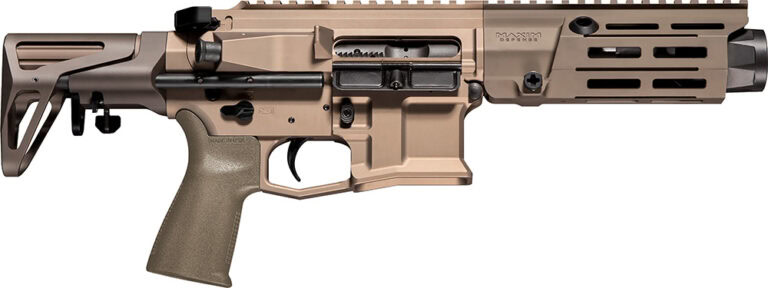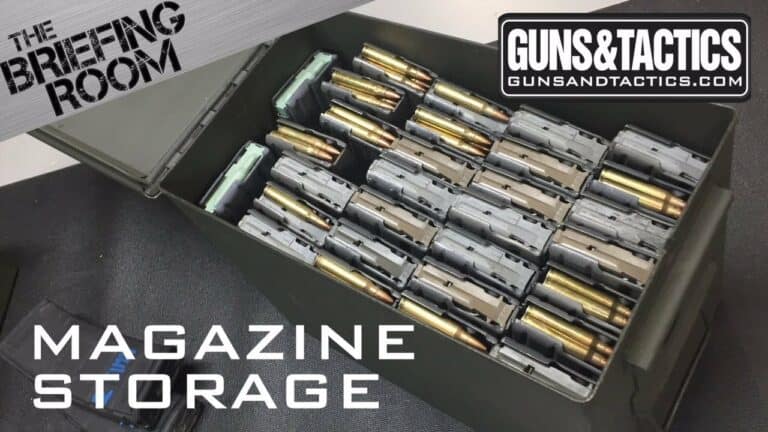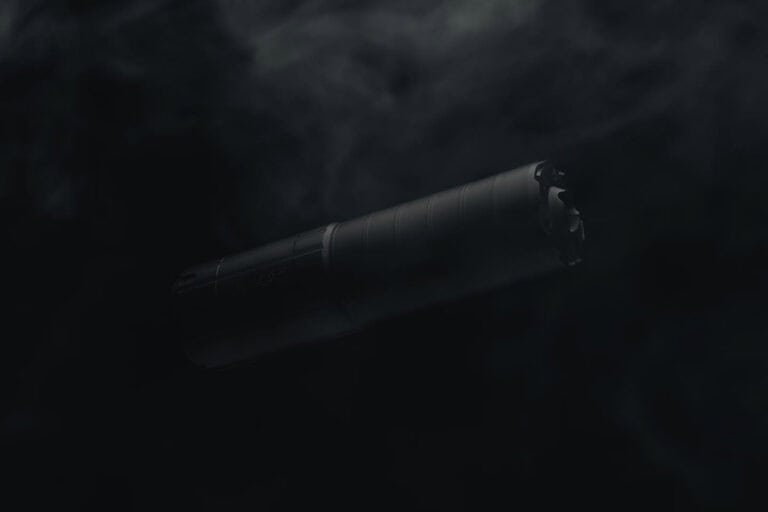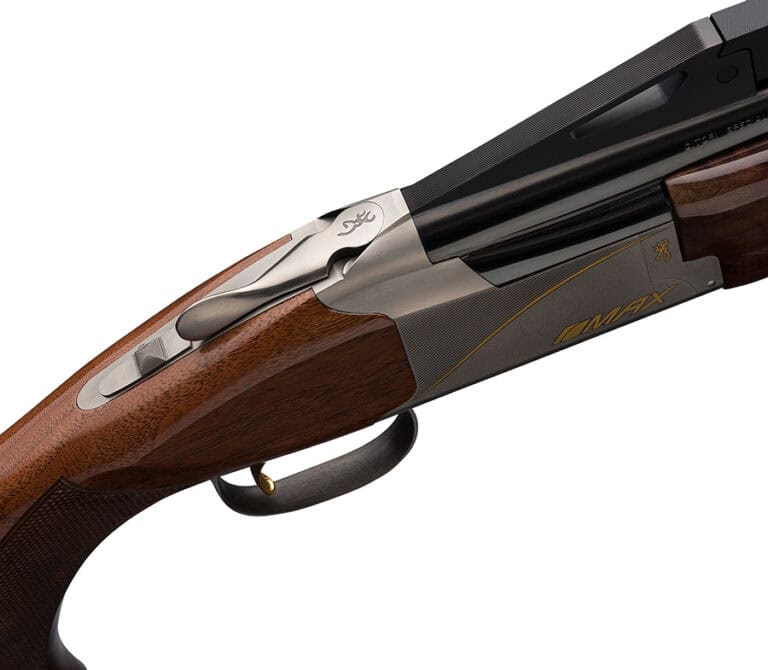TAG Precision—American-made RMR Plate for Kimber
For users of optics-ready Kimber 1911 and 2K11 pistols, TAG Precision has announced…
For users of optics-ready Kimber 1911 and 2K11 pistols, TAG Precision has announced…
Fountain Valley, CA—SureFire, LLC, manufacturer of the world’s finest—and most innovative—illumination tools and…
Shinenyx—creators of a cutting-edge fusion of digital night vision and thermal imaging technology—has…
All shooting is a balance between speed and precision. By that I mean you can…
The Mod-Navy Qual I’ve been doing this qual (or drill, or whatever the current nom…
• Built for road trips and off-road use• Manual transmission equipped• Wrapped in MultiCam Arctic…
NIKE is a giant in the apparel industry. Their swoosh logo is emblazoned all over athletes, teams, stadiums and anything else you can sell advertizing on. Ironically, they come from humble origins. One of the co-founders was Bill Bowerman. Born in 1911 in Portland Oregon, Bill was an athlete as a boy and ended up serving in WWII in the 10th Mountain Division. After his time of service ended he returned to the states and worked as the track and field coach at the University of Oregon for the next 24 years. He would pioneer the concept of jogging and would also serve as the US Olympic Track Coach in 1972. But, it was during the 1950s where he began to create better track shoes designed specifically for his athletes. Bill was an innovator and would spend decades evolving his line of shoes. He even worked to create a traction shoe without the use of metal spikes. Looking at his waffle maker one morning in 1970 he thought about reversing the pattern…? So, he used his waffle maker and some melted urethane and the first waffle sole was born. I’m sure his wife must have loved that.
"A shoe must be three things. It must be light, comfortable and it’s got to go the distance."– Bill Bowerman
While Bill is no longer with us, his legacy continues to expand and has become part of the fabric of our lives. Not only does the everyday civilian and athlete wear NIKE but they also make footwear for our military. I think that would make Bill proud.
The NIKE Special Field Boot (SFB) is NIKE’s answer to the high speed, low drag field boot. They boast that the SFB is "Built for the Tactical Athlete". Similar to the classic military field boot or jungle boot many of us have been issued, the SFB has an 8 inch tall upper made from canvas with a pull tab at the rear. The lower is made from rugged suede leather that is double and triple stitched. It features two ventilation holes above the inside arch allowing for adequate ventilation in warmer climates. The vents aid in wicking away moisture and odors from the inside of the boot and assist in draining the boot should it become submerged in water.


The boot has a more modern aesthetic compared to its older counter parts. It has a slick lacing system that is a combination of leather and metal eyelets that really allow for the laces to lock down snug. The leather also helps distribute the laces over the top of the foot better in this author’s opinion. The sole is really where the boot gets its "wow factor". It uses a very flexible rubber with four different tread patterns.

Ironically NIKE thought it to be a good idea to stamp the type of rubber and its thickness within some of the respective tread zones on the soles. You know, in case you were looking at the bottom of the boot wondering about those kind of technical attributes. Hell, I was, so I appreciate it. The outsole uses a diamond shaped lug pattern that is stamped "0.44 Sticky Rubber." Good to know. The arch has field of sharp rubber “teeth” that is designed to assist in fast roping as well as ladder, tree or rope climbing. Wicked. The toes and heels are similar to each other with a horizontal slit design except the angle of the toe tread is more angular to better improve climbing grip and the heal pattern is much deeper and reversed, with fewer "saw teeth" to improve descents. Both the heel and the toe are stamped 0.68 hard rubber. Right on. There is also "Heel Strike Zone" stamped along the heel edge. I suppose that is to remind you where to put the boot on the bad guy, or something like that. Regardless it sounds cool. Thanks to the flexibility of the sole, no break in period is required which is a great bonus. Just lace em up and go. The rubber sole along with a removable insole give the boot a lot of padding. NIKE also saw fit to add an internal rock shield to protect against punctures which would turn out to be a good thing.

I should note a couple things, before going any further. First, I have found from experience that NIKE’s run small and narrow in size. I must have a short memory because I seem to always forget this when I order. I am a size 11 and should have ordered a 11.5. The 11 was a tad short and narrow. Second, the insole has padding points at the heel and ball of the foot. While I found the heel comfortable, the padding at the ball was somewhat distracting. I am sure this has to do with my anatomy and how my foot hits the pad. Regardless, it just didn’t work for me (in the size 11). The nice thing is they are removable and you can put whatever insoles you want in them. That being said, I did send the 11s back to US Patriot Tactical and they gladly swapped them out for an 11.5. The larger boots arrived a few days later and fit much better! The boot is still a little narrow, but the length and insole issue was remedied. Lastly, the SFB is designed for warm climates. They are lightweight in order to stay cool and dry quickly. They will not provide superior ankle support nor will they keep your feet warm in colder environments. Your feet will get wet in these boots should you ford a stream as they are not waterproof and they have ventilation holes. No worries, they dry out quickly. Moving on…
Once I got the boots out into the world they performed well on a wide variety of surfaces ranging from dry to wet pavement, hard pack gravel and dirt, mud, water and stone. The hill climbs and descents were solid and the boots held well even during the steeper inclines thanks to the toe and heel treads. The boot was particularly enjoyable on hard pack gravel and dirt. The softer "sticky rubber" that makes up almost half of the tread really grabbed the ground for a sure footing. Thanks to the light weight boot and soft, flexible soles, the SFB acts more like a trail runner rather than a boot. It even has a rigid heel cup that locks the heel in so there isn’t a lot of lift or slippage inside the boot. I liked this feature to the extent that it worked well, but it began to rub me the wrong way (literally) after a few hours. I am sure this is in part that the boot fit a bit snug and that a half size larger would be a more comfortable fit.
I took the boot into the water and the mud knowing my feet would get wet. I was more interested in seeing how the mud would gum up the tread and how easily it would come out. The mud I got in was next to a stream and was fairly liquid like baby poop. All you parents know what I’m talking about. It got all over the place and was a little chunky but it washed out easily in the stream. The tread pattern isn’t super deep so they can easily fill up with organic junk but they are spread far enough apart so it is fairly easy to knock it out of the treads.

Remember I mentioned the rock shield? Upon coming back from one outing I noticed a nail stuck in my left boot that turned out to be just over a ½" long. I removed the nail and the rubber sole healed itself. Glad the nail didn’t get to my foot. Looks like the rock shield did its job.
Overall these have been a very successful boot for NIKE and they currently have 126 reviews on NIKE.com that average 4.4 out of 5 and US Patriot Tactical has 319 5 star reviews. I would give this boot a solid 4. I like the way it looks, I love the traction and the construction is solid. My only issue with the boot is that it runs a tad bit small and I’m not totally sold on the insole. Other than that I would recommend it. The pair I have is the AR670-1 compliant version in Coyote brown. For comprehensive information on AR 670-1 Uniform Regulations take a look at www.ArmyUniformChanges.com. The boots are made in Vietnam and can be had for around $150.
[ngg_images source=”galleries” container_ids=”52″ display_type=”photocrati-nextgen_basic_slideshow” gallery_width=”600″ gallery_height=”450″ cycle_effect=”fade” cycle_interval=”10″ show_thumbnail_link=”0″ thumbnail_link_text=”[Show thumbnails]” order_by=”sortorder” order_direction=”ASC” returns=”included” maximum_entity_count=”500″]
Check out Steve Coulston on Facebook and Instagram.
* The views and opinions expressed on this web site are solely those of the original authors and contributors. These views and opinions do not necessarily represent those of Guns & Tactics Magazine,
the administrative staff, and/or any/all contributors to this site.
Steve is a former United States Naval Special Warfare Combat Crewman (SWCC), NRA Life Member and has been a firearms enthusiast for over 30 years. Steve is a writer and photographer focusing on the testing and evaluation of new products and has a natural gift for breaking things. He resides in the Pacific Northwest with his wife and children enjoying the shooting sports and the great outdoors.
Halloween is a great holiday where fantasy comes to life and everyone can be a child again. In this article, Doug shares his advice for making your Halloween…

Maxim Defense showcases their 2019 product line and previews the newly designed PDX™ in 300 Blackout at the 2019
NRA Annual Meeting.
[dcs_img_center framed=”no” w=”600″ h=”400″] http://gunsandtactics.wpengine.com/wp-content/uploads/2013/09/drd-1-600-400.jpg [/dcs_img_center] [dcs_post_top] [dcs_fancy_header bgcolor=”#ffffff” color=”#000000″ fweight=”bold”]DRD Tactical announces release of Gen-2 Paratus P762 Rifle. A revolutionary takedown, semi-automatic rifle system in caliber 7.62…

In this quick tip we show you a quick, easy, and cheap way to keep your sling on the rifle and easily deployable. Not to mention it works…

Introducing the all new Aero Precision Lahar 30 line of suppressors available in 3 length configurations. Coming 2022.

No detail has been overlooked to ensure that the Browning Citori 725 Trap Max is a clay crushing machine — without the need for a trip to the gunsmith.
© 2025 UN12 Magazine
© 2025 UN12 Magazine
Wait! Don’t forget to